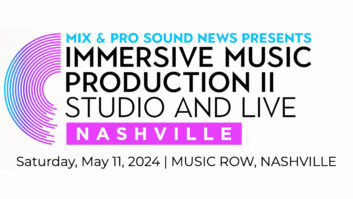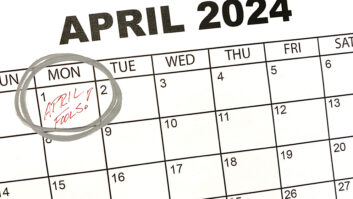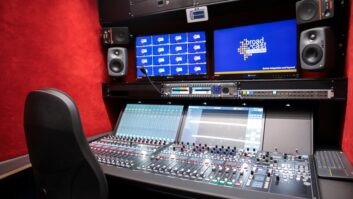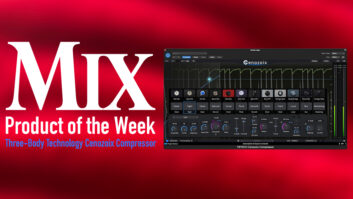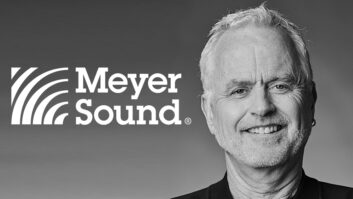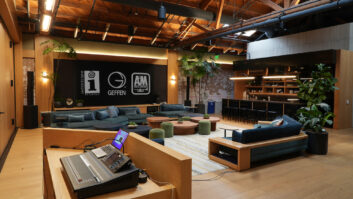Whether it’s the stress of following up a big hit or finding one, there always seems to be some obstacle in the path of a band during the recording of the “second” album. As Cibo Matto’s Yuka Honda explains, all of the work that went into their own sophomore release, Stereotype A, was long overdue.
In a nutshell, the Cibo Matto story is a music business dream come true. Two women move to New York City from their homeland of Japan, they play together in a punk rock band (Leitoh Lychee) and then decide to go out on their own. With a unique and energetic set, they build a big-time buzz in New York City, catch the eye of Warner Bros. and release a critically acclaimed debut called Viva! La Woman.
That, as they say, is the good news. The so-so news, as Honda points out, is that Viva was only half as good as it should have been. You see, they had been playing New York’s clubs with Honda on a Roland DJ-70-a programmable beat box that includes a turntable, a keyboard and minimal memory for samples-and Miho Hatori singing. While the DJ-70 was cool for live purposes, Honda explains, it’s not what she wanted to use for the album.
“I wanted to replace a lot of the samples, recut a lot of my loops and have a lot of my friends play,” she says, “but a lot of people were against that and wanted us to do what we were doing live at the time.” Within a month, the Cibo team, along with producer Mitchell Froom and engineer Tchad Blake, had the album ready to go.
That whiz-bang-boom approach didn’t sit well with Honda, and she learned a valuable lesson: “I definitely grew up, and I’m a little tougher speaking up for what I want. At that time I couldn’t really say anything. I was feeling like I should do what people said. I kind of feel that I should have pushed myself a little harder and should have shown all these other things I was doing at the time.” With that experience in mind, she asked for the producer reins during the recording of Stereotype A, and got them.
The differences between Viva and Stereotype start from the creative inspiration behind the songs. Rather than writing for live performances, Honda says she was writing for the album. (Along with a rack of keyboards and samplers, Honda uses Steinberg Cubase VST to get those initial ideas down.) And, rather than spending just a month in the studio both recording and mixing, she wanted more studio time. “I wanted to enjoy this studio time,” she says. “Instead of re-creating something that we were already doing, with Stereotype A we definitely tried to experiment with some spontaneous ideas.”
Creating the environment where they could experiment was also very important, so they selected Sear Sound and The Magic Shop in New York City. “Both studios aren’t those shiny, shiny studios with Gold discs hanging in the hallway,” she notes. “They both have wood ceilings; it’s a very relaxed, cozy feeling. I think it was very important because we were there for a really long time, so we wanted to find a place that was cozy, the walls are wood, and the people that are working there are relaxed.”
Nowhere is that improvisational vibe felt more than in the song “Lint of Love,” which features brilliant, shifting signature changes, electronic punches and instrument flairs. After coming up with a six-minute loop, Honda brought the track to Hatori so she could write the song’s lyrics. Once they got in the studio Honda knew she wanted to add a handful of live musicians, including keyboardist John Medeski, who contributed clavinet; Joshua Roseman on trombone; and Sebastian Steinberg on fuzz bass. She sampled and rearranged some of Medeski’s work, doubled Roseman’s horn parts and did some sampling wizardry on the songs’ heavy metal guitar licks, which were played by Sean Lennon and Timo Ellis, the auxiliary members of the band. Then she brought in Hatori, Lennon, Ellis and rapper Duma Love to contribute vocal parts. “I did all that in Pro Tools, then I decided on the arrangement in the studio on the spot,” she explains. “That arrangement was improvised, and I think it works pretty good.”
While she relied on Pro Tools for that song, she went back to an old-school technique on the song “Speechless.” “I was watching this documentary about the making of Stevie Wonder’s Songs in the Key of Life,” she says. “They were showing how Stevie Wonder would slow down the tape and record the vocal and get a Munchkin effect. So I said we’d do that, and on one track the background is totally slowed down, and Sean and Timo are kind of singing really funky. I recorded another track, same guys singing, but I recorded them at fast speed. I recorded the lower vocal harmony that way, so the lower vocal harmony actually sounds really low and the higher one sounds high.”
Though they relied on newer technology to fly song bits in and alter tracks (key plug-ins, according to engineer/mixer Chris Shaw, included AutoTune, DeVerb and DSP’s Spider), the album’s warm sound would probably not have been achieved had they not recorded at Sear Sound and The Magic Shop. Not only do both studios boast vintage Neve boards, each has an incredible assortment of classic microphones and outboard gear. The list of keyboards that Honda turned to is also impressive: Akai 3200, Prophet 5, Yamaha DX7, Electro-Harmonix Micro Synth, Omni Chord, CV101, D-50, Yamaha TX802, Juno 60. “I try to use keyboards from every decade,” she says with a laugh.
They also seemed to use outboard gear from every decade, including some of John Lennon’s old MXR pedals that Sean brought in, more current favorites such as Eventide H3000 and 3500s, and offbeat choices like a vocal effect pedal called a Toka and some unnamed “cheap echo/space effect things.” According to Tom Schick, who engineered the first part of the tracking dates, the group used a number of different compressors and limiters, including Fairchild 660s and LA-2As on the vocals, and an RCA BA6 on the bass. They also had a Pultec MB-1 that used to be a mic-pre but was modified to be a limiter. Shaw says he used an Imperical Labs Distressor almost exclusively for compression/limiting.
Songs were tracked to a Studer A27 through the Neve 8038 at Sear Sound. Mixing duties were nearly split between Shaw and the Butcher Brothers, with Dan the Automator manning the boards for “Sunday” and Zak from the band Buffalo Daughter on “Clouds.” As Butcher Brother Phil Nicolo explains, mixing the album was not their only responsibility: They added some new samples to “King of Silence,” reworked “Sci-Fi Wasabi” and had Hatori write more lyrics for “Moonchild.” The only problem was that, a couple songs into the mixing sessions, the band had to leave for an Australian tour. To keep their deadline, the Butcher Brothers would mix a track, burn a CD and then overnight it to the band’s location. The band would then give a listen and send back detailed notes.
“They knew exactly what they wanted,” Nicolo remembers. “So, it would be like ’23 seconds, guitar left side, lick needs to be a half-a-dB louder. At 43 seconds, main pad needs more reverb; 1:10, background vocal harmony needs to be louder.’ They would listen to it very closely and then give me very specific directions in some cases, but in other cases it would be a mood thing. Like at the end of ‘Lint of Love’ they wanted it to be really interesting and different, so she gave me images: ‘I want the feeling of a woman crying in childbirth or the feeling of a man crying in a phone booth.’ You go, ‘A man crying in a phone booth?’ There so many images that come to mind with that kind of stuff.”
Nicolo has high praise for Honda, noting that “There wasn’t a single song on the tape that I pushed up and went, ‘Oh, yeah, Roland 803, setting three.’ Every sound, every loop was like, ‘Wow, this is cool, this is different.’ She did a great job putting the sonic palette together.”

